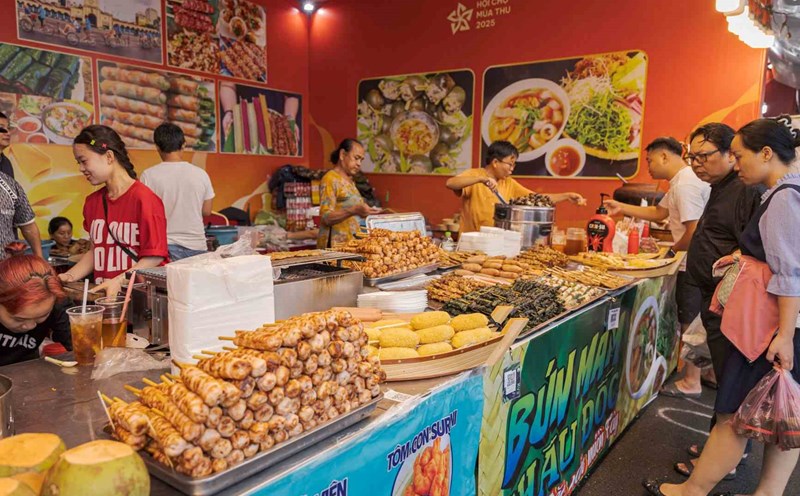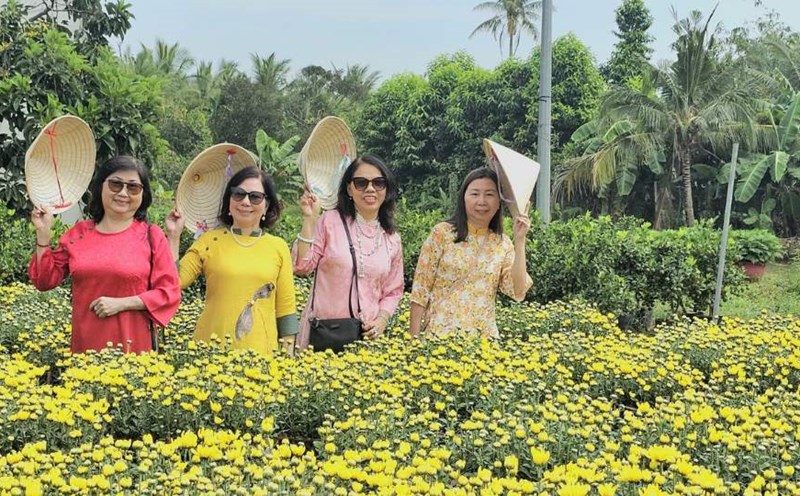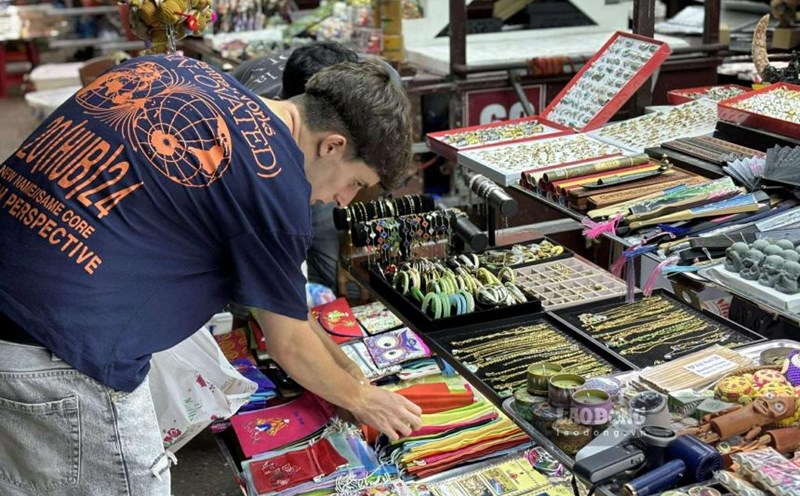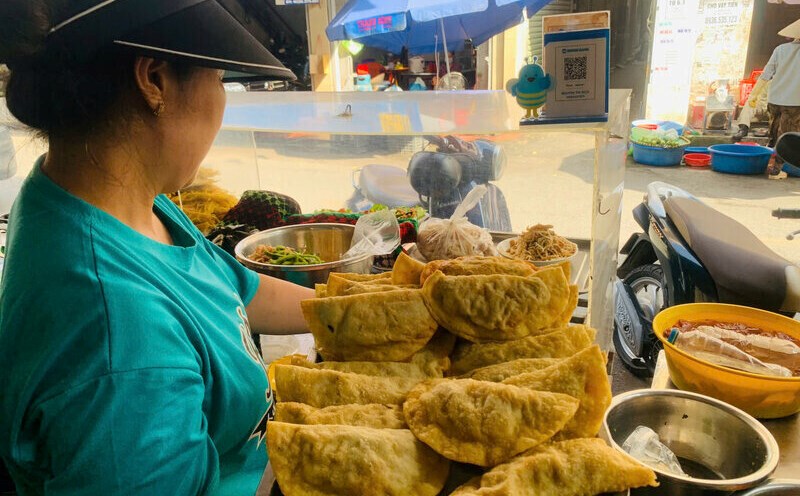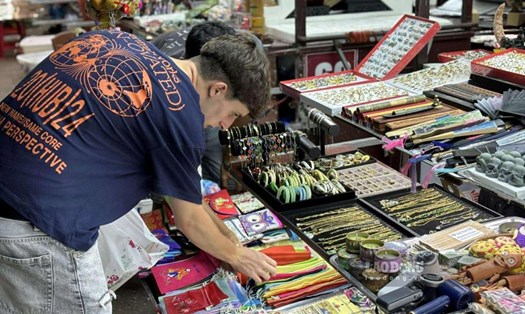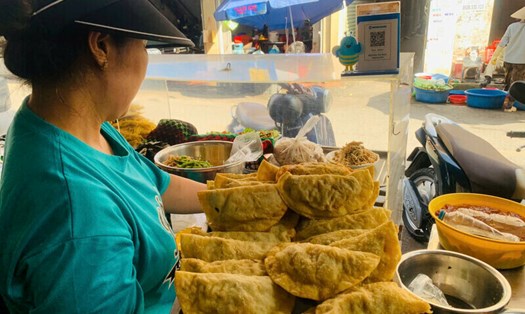However, the floating market in Nam Can area (Ca Mau) - which was the last market gathering place before the Mekong River flooded into the sea - is called the floating market. Just like the saying "the fate of water buoys floating", Nam Can market has now drifted to the wrong place!
Perhaps, it is rare for just one market to drift like a floating thing. The two major water flows of Tien Giang, Hau Giang and dozens of adjacent rivers have created floating markets with net water, the water is increasing and decreasing every day. Even though it was formed by water, using rivers as a market, the floating market is still different from a floating market.
In the land that has been built up in the newly built Nam Can for about a hundred years, the impact of the tides of the East Sea and the West Sea is very large. This place is covered with thousands of cajuput forests and mangrove forests, and is bustling with the strong flow of the Cua Lon river - the only river in Vietnam that originates from the sea (the Bo De estuary in the East Sea) and flows into the sea (the Ong Trang estuary in the West Sea).
At the Cua Lon river crossing in Nam Can, key cargo ships across the river branches of the land at the end of the sky gathered, forming Nam Can floating market. The places in the West and Southeast are very rustic, often using human names to make land names such as Ong Trang Gate, Ba Thanh Canal, Ong Dinh Canal...
What about Nam Can? According to the people here, more than 200 years ago, this vast river and lake crossing was originally unknown, but there was a group of overseas Vietnamese who came here, built an area of 5 stone farms to live in and make a living.
Then, the canopy of canvas trees suddenly gathered here to gather in the market, forming a town on the wharf under the busy boat. Gradually, the river crossing is packed with canals and fish and shrimp, becoming a gathering place for fishermen, banana growers, coal burners, and street vendors.
And the name Nam Can market was formed, and existed for 2 centuries. The scale of the market is determined by the continuous number of ships entering and leaving throughout the history of formation. As a convergence of the Cua Lon River, floating markets gather boats from all over the Dat Mui region to trade or stop to rest, waiting for the water to recede to continue.
That is the name, so why is it a floating market and not a floating market like in other countries? Only if you ask do you have an answer. Unlike Can Tho, Hau Giang, Tien Giang, Long Xuyen with floating markets, where sellers travel on the river by boat, canoe, cage, boat, boat, etc.
At Nam Can market, most of the customers live in a fixed house on the shore, the main door faces the road, the back door next to the river opens a small door for trading. The seller's boats kept drifting along the riverbank, and when they saw someone calling, they turned to sell. This is clearly different from the way of floating on the river for trading. For example, every house in this area has a back door and stakes to anchor the boat.
Every day, there are dozens of such shipments with the image of boats drifting ashore to sell goods. At the floating market, people carry goods to sell in the morning, then return in the afternoon and evening; use large boats and boats for wholesale, and small boats for retail or weave through canals to sell to households living far from river crossings.

This 200-year trading process has created a street market lifestyle. The seller and the buyer became friendly, dependent on each other to make a living, like a big family on both banks of the river. Many times, cargo boats have become a means of transporting sick people or "excessive" to a certain place.
In this country with enough rivers, seas, fields, and mangrove forests, goods are of course plump and abundant. However, Nam Can floating market also has specialties, not found anywhere else. That is the famous "black gold" exploited in the vast mangrove forest.
This "black gold" is not coal like in Quang Ninh mines, but charcoal burned from dry mangrove stumps in coal mines in the middle of the forest. Coal has been the main livelihood of Nam Can people for generations, being favored for its low smoke, high temperature, and durable burning. The mangrove coal boats were traded here and then spread throughout the "Southernmost province", then to Japan, China...
Another strategic item of Nam Can floating market is seafood. Pineapple, carp, and common carp are considered specialties of this region. Every August to October of the lunar calendar, the fish sauce in the mangrove forest is cooked and falls into the water flowing into the Cua Lon river, that is the time when the herd of fragrant, chewy, sweet pineapple fish from the sea comes in to eat the fish sauce.
And that is an opportunity for fishermen to catch pineapple by rowing boats to find fish in the flock and then launching fish in a ahead or casting nets to catch fish. Nam Can pineapple is completely a natural marine fish, so it has much higher meat quality and a very characteristic sweet taste. But there are only pineapple fish!
Also around this time, the three herds cracked the cow from the cave to avoid the water lying on the fish sauce to enter the mating and breeding season. The tripe is currently plump and very fatty, suitable for making tripe fish sauce or other dishes. Therefore, Nam Can market has another product to "show off" the market.
Now, at this time, the Cua Lon river crossing is still bustling with the muddy red water of the flood season, worthy of the name Dai Mon Giang for dividing the territory of the cajuput forest and mangrove forest. However, Nam Can floating market has drifted to some places, since Nam Can bridge was inaugurated in 2015.
The advantages of the road in terms of speed and convenience have caused the floating market with more than 200 years of age to flap, replaced by a spacious market built on the shore, connected to a complete infrastructure traffic system.
However, on the silver wave sparkling with the morning sunlight, the lake's trading boats are still bustling near the wharf to " dig food", "sell goods" and then drift away into the river, running deep into canals and ditches to sell as if they have not stopped the old habit. Therefore, those who travel to visit the land of Mui still have a little bit of a return to regret the old days.
Even though Nam Can floating market only has a few traces left or turned into a tourism product, large motorized boats and shrimp-tailed motorized boats are still slow to travel. The back doors of the deserted houses along the river are still open to welcome the wind, welcome regular customers to trade and meet as usual.


